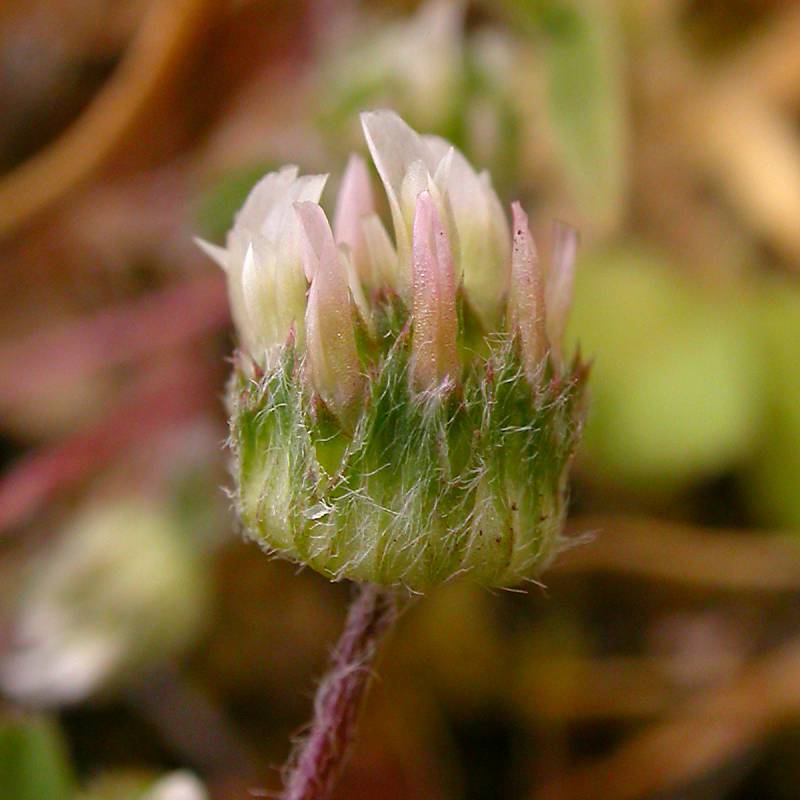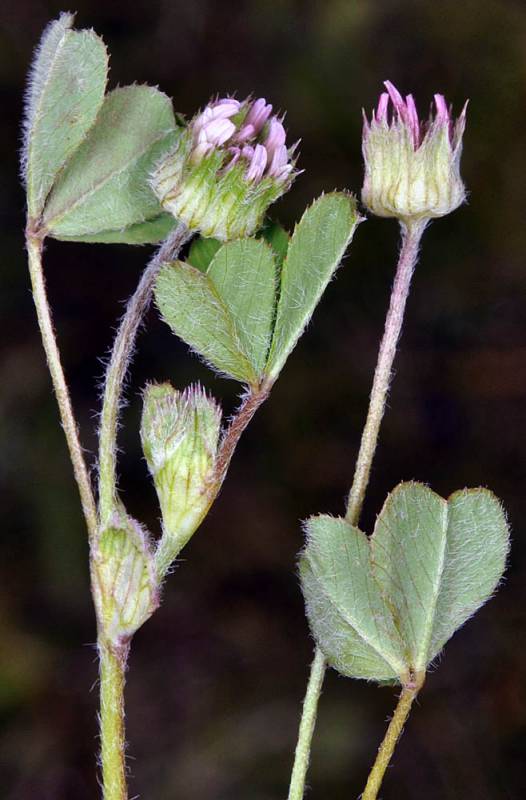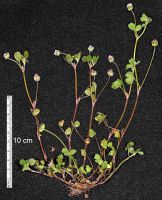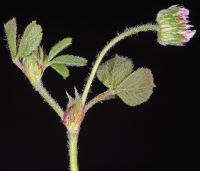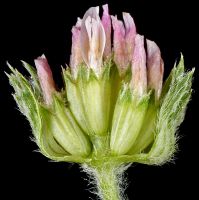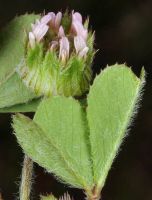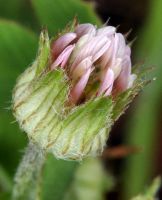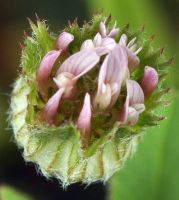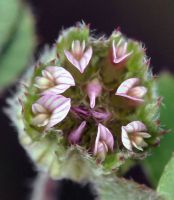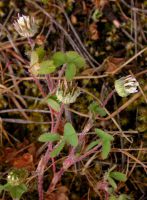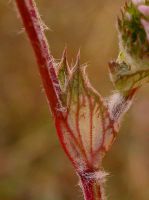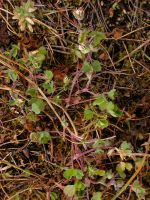Distribution: Occurring chiefly west of the Cascades crest and in the Columbia River Gorge in Washington; British Columbia to California; also in South America.
Habitat: In meadows or on rocky or sandy soil at low elevations.
Flowers: April-June
Origin: Native
Growth Duration: Annual
Conservation Status: Not of concern
Pollination: Bumblebees, bees, butterflies, flies
Pubescent annual, the stems 1-5 dm. long, decumbent to erect.
Leaves trifoliate, leaflets narrowly to broadly obcordate, 5-15 mm. long; stipules ovate, half as long as the leaflets.
Inflorescence of many-flowered, involucrate heads, 5-8 mm. long and about as wide to twice as wide as long, on axillary peduncles shorter than the leaves; involucres villous, cup-shaped, with 10-12 lacerate-toothed lobes; flowers 4-6 mm. long, white to pale red, aging to dark pinkish-brown; calyx glabrous, the 5 teeth triangular, much shorter than the tube; corolla pea-like, much longer than the calyx.
Pod 1-seeded, often rupturing the calyx.
Publication: Bot. Misc. 3: 180. 1833.
PNW Herbaria: Specimen records of Trifolium microdon in the Consortium of Pacific Northwest Herbaria database
WA Flora Checklist: Trifolium microdon checklist entry
OregonFlora: Trifolium microdon information
E-Flora BC: Trifolium microdon atlas page
CalPhotos: Trifolium microdon photos

